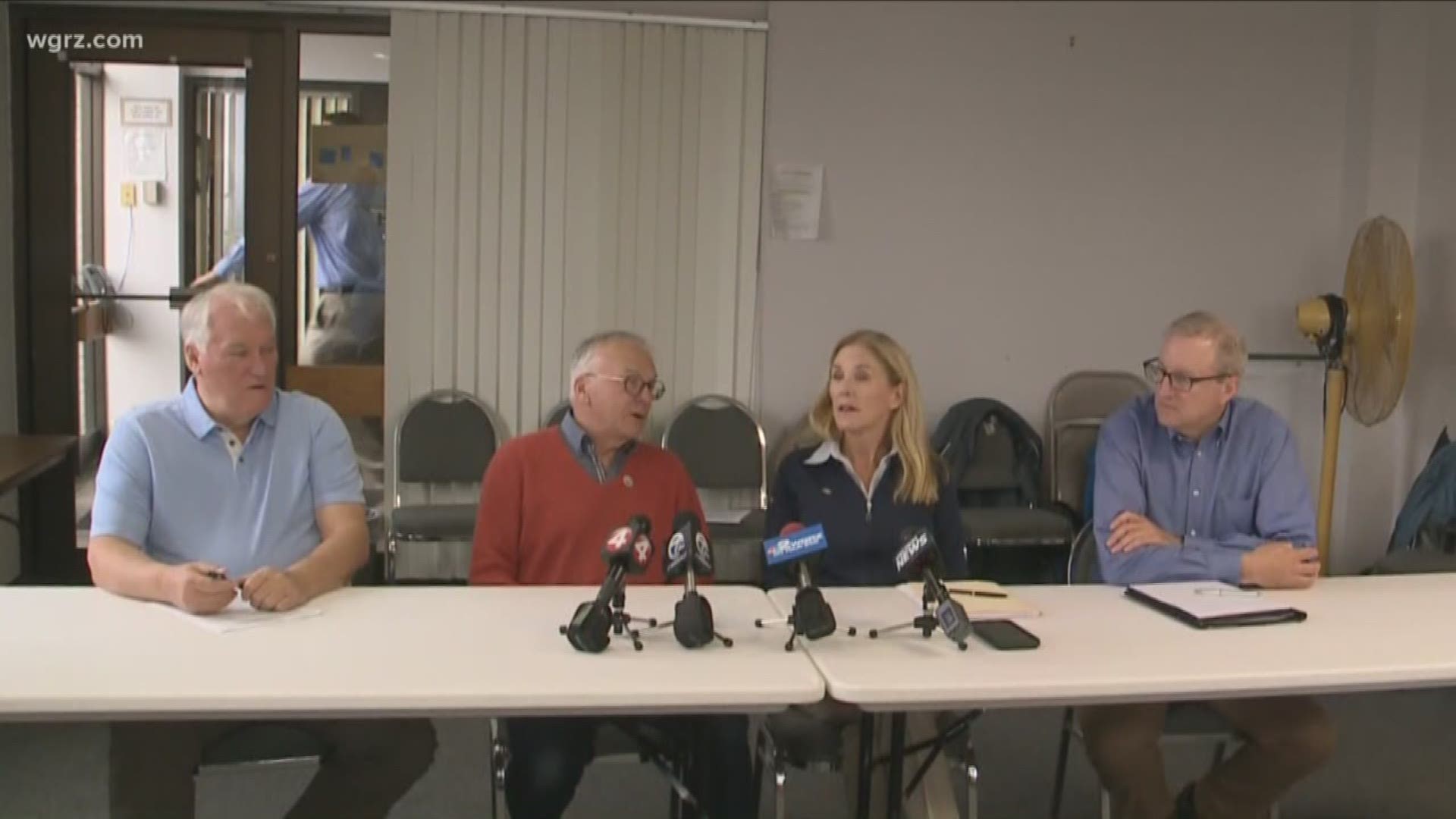BUFFALO, N.Y. — Newly appointed members of the International Joint Commission, which regulates water levels on Lake Ontario, indicate that there is no quick fix in the offing regarding high water levels that threaten shoreline communities with flooding anytime the wind comes from the north or east.
Such conditions were prevalent on Tuesday, when the group toured the area to listen to concerns from local officials, as waves from a wind driven surf pounded the lake’s south shore.
Jane Corwin, a former New York State Assemblywoman from Western New York who is now serving as the American Section Chair of the IJC, addressed the common belief of lakeshore property owners that Plan 2014, which set new regulations for the lake, has been the primary cause of flooding in 2017 and now.
“Plan 2014 gives the board the authority to make decisions as they see fit," noted Corwin, who joined other board members in stating that to let any more water out at this point would imperil communities beyond the lake’s outlet at the St. Lawrence River.
“So Plan 2014 isn't the problem right now because they are operating beyond that basically," Corwin said.
When asked if she or any other newly appointees of the IJC were of the mind to amend or rescind Plan 2014, Corwin replied, “I’ve looked into that. However, Plan 2014 took several years to develop and implement and had to get the approval not only of the IJC, but had to go upstairs to the U.S. State Department and the Department of Global Affairs for Canada. … It took a long time to do it, and it would take a long time to undo it, quite frankly.”
When asked by 2 On Your Side if the board was more or less conceding that it can do nothing to allay the fears of shoreline property owners facing ever present flood threats, Pierre Beland, Canadian Section Chair of the IJC, replied, “Well, I’m sorry, but we are flowing as much water as the systems will take out of lake Ontario. … We are doing the maximum that we can."
However, data indicates the current outflow being permitted by the IJC is well below what it was at this point last year and the year prior, all while the lake is about to reach a record high water level.
When asked about this, Beland replied, “I don't have the figures in front of me, but I know we have flowed all the water we can flow without causing more injury than there is presently.”
New York Gov. Andrew Cuomo has been highly critical of the IJC, saying it has failed in its mission to properly manage lake levels.
However, while in one breath Cuomo recently said it's “not his job” to tell the IJC how to do its job, with the next breath he suggested it could have let more water out during the winter months to allay the current crisis.
“It’s a pretty complicated process and there are other issues going on involving the ice pack and controlling the water levels in winter having to do with ice pack. … But I look forward to meeting with Governor Cuomo and sharing with him some of what we're learning to give him another perspective on what’s happening," Corwin said.
While some, including Cuomo, have indicated their belief that global warming has impacted the lake levels (even going so far as to state this flooding event reflects the “new normal”), Corwin cautioned that such assertions bereft of any proof, and that only further study could indicate whether such a claim might hold some truth.
“If you look at historical data for Lake Ontario, there have been other flooding events during the 90s, 80s and the 1970s. And in each of those cases it wasn’t just a one year event. It was two, three, or even five years in duration. Right now we’re in year three of this event, so we don’t know if this is an isolated event and the water levels will go back down again, or if this is a new norm based on new climate patterns,” Corwin said.
MORE ON WGRZ.COM


